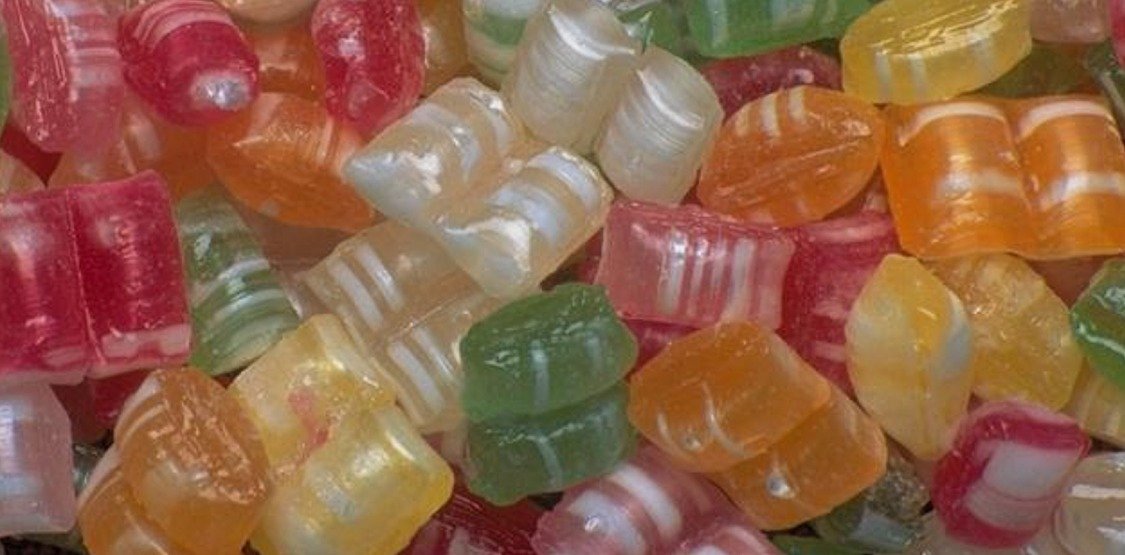Every now and then a vintage Japanese kit comes on the market with one of the “fun” wraps. For Star made drums, that would be: the Pearl Fantasia, or the Lava Pearl, or the Peacock Pearl, or what I have today, the Fibre Gold. The actual beauty of these wraps can be best appreciated in person and up close, but hopefully this will represent well in photographs.
The Fibre Gold wrap is an excellent example of Star’s creative taste in their wraps and if you look closely you can see the details of the fine metallic horizontal brushstrokes countered with the vertical pearl waves. Together these combine to produce a beautiful three dimensional display reminiscent of the old fashioned pearlesque candies grandma set out at Christmastime.
Fibre Gold first appeared on the cover drum instructional book in 1965, but the first catalog appearance was in Star’s 1966 catalog and was last seen listed in Tama’s 1974 catalog which was their transitional year between the old Star brand and the new Tama. One of the unique properties of this wrap is that the angle in which you see it completely changes its appearance. Some wraps need color lighting to get the most out of them, this is one wrap that cries out for bright white light. This particular kit was acquired from multiple sources over time and has been restored to its former glory as a complete and well functioning classic MIJ drum set. The main part of this set is the bass drum with its mounted tom which came to me as a set from North Carolina, but was originally owned by a Baltimore music store and was likely used as a rental.
The Specifications:
Bass Drum: Likely made around 1967, this is a thick 9-ply Luan shell, painted gray onthe interior, it’s a common 20” x 14” with 6 (Slingerland style) lugs per side, the early style rail consolette, cymbal holder, and wood hoops.
Mounted Tom: Presumably made around 1967 as well, the mounted tom is an unpainted 6-ply Luan shell, with 6 (Slingerland style) lugs per side, triple-flange hoops, and a standard Star spade receiver mount.
Snare Drum: The snare drum is the common “Dynamic” model, which is a 4-line chrome over steel shell, measuring 14” x 5”, with 6 (Slingerland style) lugs, triple-flange hoops, and an “Artist Ltd.” badge.
Floor Tom: The floor tom was likely the same era but with the “Stage Band” style center lug configuration (with 6 Slingerland style lugs). The 14” x 14” 6-ply Luan shell, triple-flange hoops, and original Royal Star badge make this a great addition to finish off the kit.
Stands & Cymbals: For fun I added a Star cymbal mount with 10” MIJ cymbal, a Star flat snare stand, a bracket leg throne (possibly Star), and a “Foot Pedal” made in Japan by Yan Drum.
(Note: The Star snare stand is quite flimsy and the cymbal sounds terrible, but they do add a certain nostalgic authenticity of how the kit would have looked when it was first bought.)
All together as a full kit I would call this a late 60’s Swing Star “No. 4030” with an add-on floor tom. This type of configuration was very common in the catalogs of the 60’s, a floor tom or hi-hat would be considered an extra, but the low initial price point of the kit made it possible for beginners to have new drums and add more drums and cymbals later.
When I saw this cover I had to find a copy to accompany my kit. This is from Alfred Music Company, dated 1965. (You can’t beat 60’s advertising!)
Restoration Notes: When I restore drums I polish all the metal parts down to the swivel nuts, springs, and screw heads, I sharpen the bearing edges, I fine sand the inside of the shells, and I buff the wrap. When the drums are for my personal use I put coated Remo Ambassadors top and bottom (or Emperors on top if they are going to be hit a little harder). I do also like the Evans 56 heads for a bass drum batter head. These shells may be slightly less resonate than the 3-ply shells of the early 60’s, but they are far more durable. My plan is to add new heads and use it as a studio kit, until then it will just sit and look pretty on display, like a candy dish.









